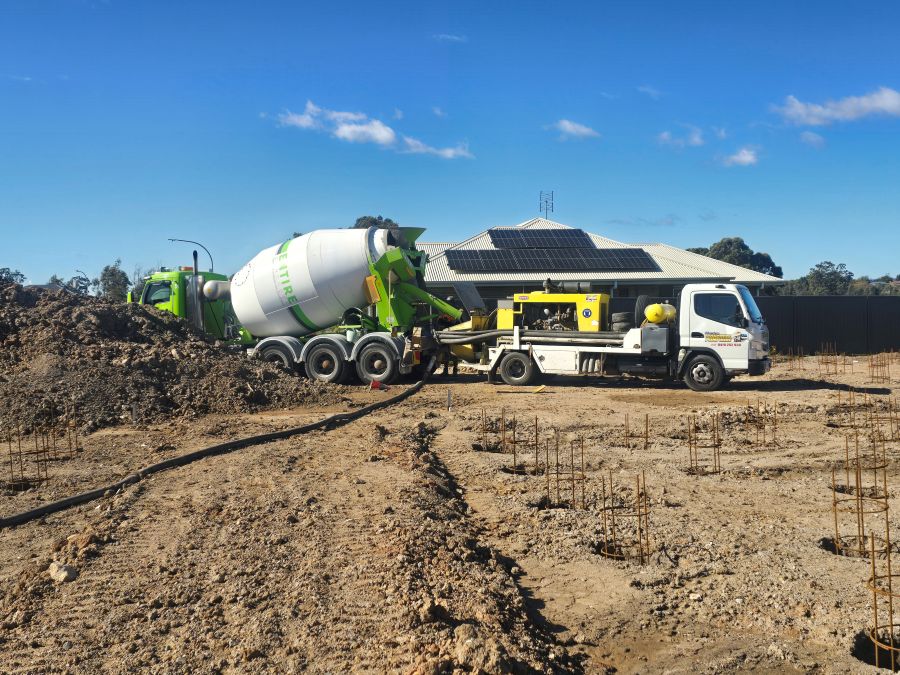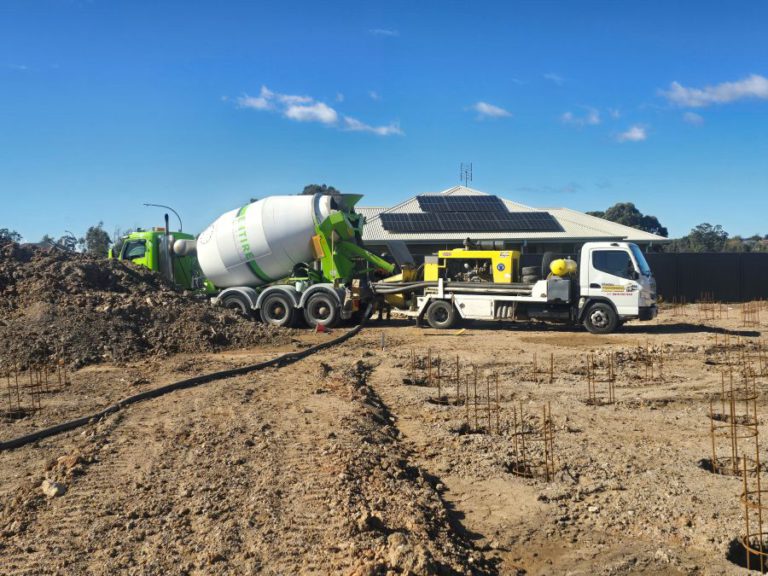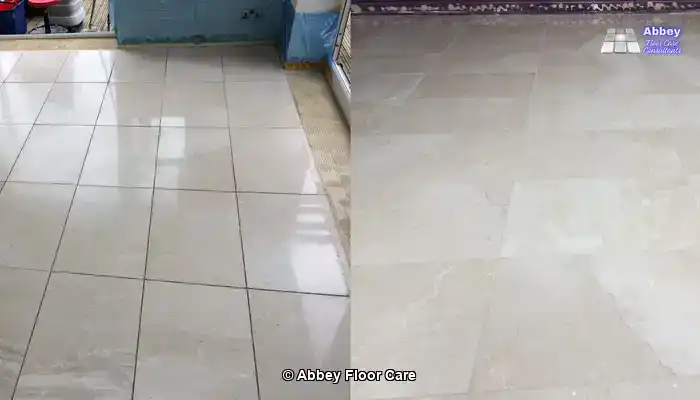Key Strategies for Achieving Safe Concrete Pumping Practices in 2025
In the evolving landscape of concrete pumping safety for 2025, it is crucial to emphasise thorough training, detailed equipment inspections, well-defined exclusion zones, and comprehensive pre-start planning. Recognising the inherent dangers associated with concrete pumping and strictly following established safety protocols is essential to prevent accidents and ensure timely progress on construction projects. By prioritising these vital safety measures, workers can foster a secure working environment that enhances both efficiency and productivity, ultimately establishing a solid foundation for successful project completion.

Recognising and Mitigating Common Hazards in Concrete Pumping Operations
As reported by SafeWork NSW, operators and crew members involved in concrete placement face numerous significant risks when setting up or operating concrete pumps. These hazards can include:
- Unstable ground conditions or improper setups on inclined surfaces, which can result in catastrophic accidents.
- Using equipment beyond its design specifications, thus heightening the likelihood of mechanical failures.
- Working near overhead power lines, which poses severe electrocution risks.
- Collisions with trucks, structures, or personnel on site, leading to potentially serious injuries.
- Hose whip and line surges, which can create perilous situations if not effectively managed.
- Unexpected equipment failures and blockages that may disrupt operations.
- Exposure to crush zones, diesel fumes, and high noise levels, negatively affecting health.
- Slip, trip, and confined space hazards that could result in significant injuries.
These risks are not merely theoretical; they frequently arise when safety protocols are neglected or inconsistently applied. As such, our focus remains firmly on critical safety measures on-site, ensuring that every worker is thoroughly informed and adheres to established protocols to foster a safer working environment.
1. Enhance Safety Standards Through Comprehensive Training and Certification for All Crew Members
Concrete pumps operate under high pressure, necessitating stringent handling requirements for operators. In NSW, it is imperative that operators obtain:
- An HR licence for operating boom trucks, confirming their qualifications and competence.
- Verified VOCs (Verification of Competency) to validate their proficiency in safely handling equipment.
- Training in hazard recognition coupled with a thorough understanding of emergency stop procedures to minimise risks.
Additionally, hose handlers must undergo comprehensive briefings to ensure they avoid standing in discharge zones and can swiftly identify blockages, which is crucial for maintaining operational safety and preventing accidents during concrete pumping operations.
2. Establish and Enforce Exclusion Zones to Enhance Safety Measures
Concrete under pressure flows rapidly and can pose extreme danger if released unexpectedly. Therefore, it is essential to have clearly marked safety zones surrounding the hose and boom at all times. Key safety actions include:
- Implementing barriers and flagging to effectively delineate risk areas around the pumping operation.
- Prohibiting personnel from standing in front of the discharge area to prevent injuries.
- Restricting movements underneath booms to further minimise accident risks.
3. Carry Out Detailed Equipment Inspections Before Each Concrete Pour
Every concrete pumping job commences with a thorough equipment inspection. At Hunter Concrete Pumps, we conduct meticulous checks on:
- Hoses and reducers to ensure they are in optimal working condition and free from wear and tear.
- Couplings and clamps to guarantee secure connections that prevent any potential leaks.
- The integrity of the boom and seals to prevent any leaks during operation.
- Primer levels, ensuring the pump operates smoothly and efficiently without interruptions.
- Emergency shutoff systems to ensure immediate response capabilities in case of an emergency.
No operation commences without the pump successfully passing all inspections, reinforcing our unwavering commitment to safety and operational efficiency for all concrete pumping tasks.
4. Designate a Lead Operator for Coordinated Operations and Enhanced Communication
Effective communication is vital to the success of any concrete pumping operation. Each crew must appoint a lead operator responsible for overseeing the pour and ensuring seamless coordination with:
- Agitator drivers to synchronise operations for an uninterrupted and efficient pour.
- Hose handlers who manage the flow of concrete safely and accurately.
- Site supervisors to ensure strict adherence to site regulations and safety standards.
- Concreters and finishers to achieve the desired project outcomes with precision.
This clear chain of command is crucial for avoiding errors and miscommunications, ultimately enhancing both the safety and efficiency of the entire operation.
5. Kick Off Every Pour with a Comprehensive Safety Briefing
Before commencing any pump operation, it is critical for the crew to address several vital topics, which include:
- Site access and hose routing for optimal flow management and safety.
- Emergency response plans and first aid protocols to ensure readiness for any situation.
- Truck staging and washout procedures to maintain site cleanliness and orderliness.
- Identifying slip risks and ensuring the appropriate use of PPE (Personal Protective Equipment) for every crew member.
- Defining the roles of spotters where necessary to further enhance safety and oversight.
At Hunter Concrete Pumps, we rigorously implement these protocols on every job without exception, guaranteeing the safety of our crew and the integrity of the project.
The Indispensable Importance of Safety in Concrete Pumping Operations
Ensuring safe concrete pours not only protects your crew but also safeguards your project timeline, budget, and reputation. Any lapse in safety can lead to injuries, project delays, or regulatory scrutiny, which are risks that cannot be tolerated. We strictly adhere to the SafeWork NSW guidelines for concrete pumping on every job. Our operators are not only trained but also licensed and insured, ensuring that when you choose our services, you are opting for a provider that integrates safety into every aspect of the process.
Is It Necessary to Provide Spotters or Safety Personnel for My Concrete Pour?
For civil and commercial job sites, the answer is a resounding yes; spotters or safety personnel are essential for maintaining high safety standards. However, for residential projects, our dedicated pump crews are skilled at managing safety zones effectively, ensuring the site remains secure. We will inform you of any specific requirements during the quoting process to ensure clarity and compliance with all safety regulations.
What Are the Key Safety Risks Associated with Concrete Pumping Jobs?
The three primary risks include untrained hose handling, inadequate access planning, and the lack of exclusion zones. We proactively address all three of these critical issues before the concrete pour begins, ensuring a safer working environment for everyone involved in the operation.
Experience Smooth and Safe Concrete Pours with Our Professional Expertise
Concrete pumping safety goes beyond mere compliance with regulations; it focuses on completing the job without injuries or delays. When your team is well-versed in safety procedures and your operator arrives fully equipped and prepared, the concrete pour can proceed efficiently, swiftly, and without complications, paving the way for successful project outcomes.
Concrete Pump Hire
The Article: Concrete Pumping Safety Protocols: 2025’s Top 5 Tips first appeared on https://writebuff.com
The Article Concrete Pumping Safety Tips: Top 5 Protocols for 2025 Was Found On https://limitsofstrategy.com




